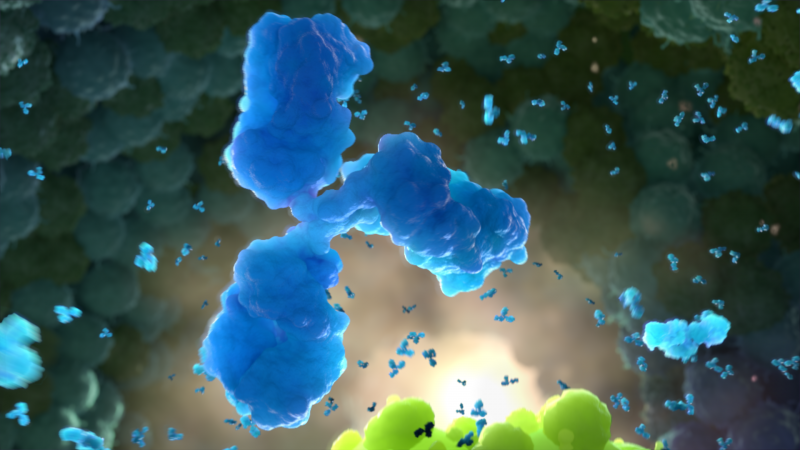Animation Expedition #3 - Invisible Enemies: How Do Viruses Reproduce?

The common cold is just one of many diseases caused by viruses. How does a tiny virus cause cold symptoms?
Do you remember when you last had a cold? You might have learned that a virus caused your cold. You’ll be amazed at the tiny size of a cold virus. If a virus particle was the size of a peanut, the period at the end of this sentence would be the size of a football field.
It’s hard to imagine the actual size of a virus. How does something so small give you a runny nose, sore throat and headache? The answer is in the way the virus reproduces.
View the animation How Do Viruses Reproduce?
In this video, you see how the virus makes copies of itself. The video shows the cold virus big enough to see. You can see the body’s cells dwarf the virus. How does the tiny virus attack and defeat the much bigger cells? Its secret is its genetic blueprints. In some viruses, the blueprints are made of DNA. In other viruses, the genetic blueprints are composed of RNA. This video shows a virus with genetic blueprints made of DNA. Watch the video to see how the viral DNA takes over the cell. It forces the cell to make more virus particles. It does this by hijacking the cells’ protein-making machinery. So, instead of doing their regular job in your body, the cells make virus particles. Thousands of virus particles can be made by a single hijacked cell. Each new virus particle can then go on to infect another cell.
Now, you can see why you get sick. Cells are dying. Viruses are spreading. Your immune system responds in several ways. It creates mucus to get rid of viruses in the cells lining the nose and the sinuses. Mucus irritates the throat’s delicate lining, causing sore throat. A headache and fever may also be part of the body’s response. The fever is a result of the body temperature increasing to make it harder for viruses to keep reproducing.
Yes, cold or flu symptoms can be nasty. But remember that they’re really your body’s way of making you better!
Check Your Understanding Question
Each cell infected by the influenza A virus can produce from 1,000 to 10,000 virions (virus particles). Assume one cell releases 1,000 virions in four hours. How long would it take for a million cells to be infected?
Answer
The key is to understand that each virion can infect one cell every four hours.
- First four hours: one cell produces 1,000 virions. Each of these infects a cell. Total number of cells infected = 1,000.
- Second four hours = each cell produces 1,000 virions. Each of these infects a cell. Total number of cells infected = 1,000 x 1,000 = 1,000,000.
- Therefore, it takes 2 x 4 = 8 hours to infect a million cells from one infected cell initially.
This is the third in a series of postings highlighting our Vaccine Makers Project animations.

